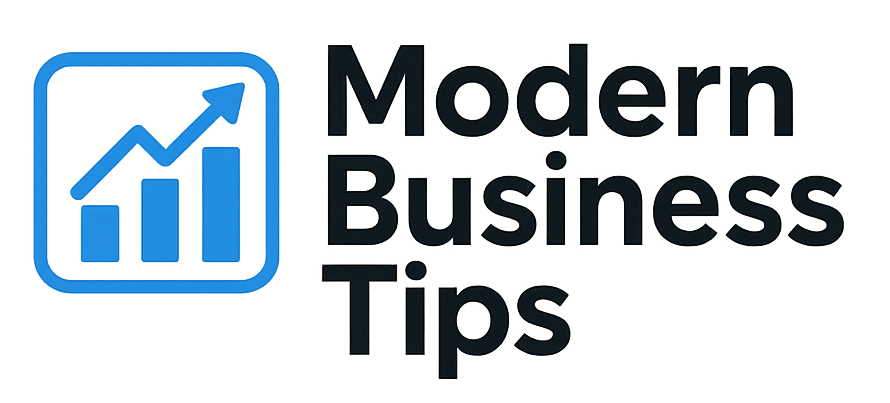Building an ecommerce site is a journey full of excitement and importance in today’s world. Online sales now make up over 25% of all transactions. This makes creating an online store a key step for any business wanting to grow.
Effective ecommerce website development lets me reach more customers than ever before. It’s not just about picking the right platform or setting up a solid business model. It also means using digital marketing and focusing on design and payment solutions.
Each part works together to make an ecommerce site a central place for marketing, operations, and connecting with customers.
Key Takeaways
- Understanding the importance of a well-structured ecommerce site is key.
- The right business model can greatly impact success.
- Choosing the right platform is vital for growth.
- Good marketing strategies boost visibility and sales.
- Improving user experience is essential for keeping customers.
Define Your Ecommerce Business Model
Starting a successful ecommerce business begins with picking a niche. This niche should match my interests and meet market needs. Finding the right niche helps me focus my marketing and build loyal customers.
Choose a Niche
I look for niches with growth and interest. This lets me customize my products and marketing. It makes shopping more fun and engaging for my audience.
Analyze Competitors
Doing a deep dive into competitors helps me see what they do well and what they don’t. By studying their strategies, I find unique opportunities. This helps my ecommerce business shine in a busy market.
Define Your Target Audience
Knowing who my audience is is key. This knowledge helps me create marketing that speaks directly to them. By meeting their needs, I boost engagement and sales in my store.
Select the Right Platform
Choosing the right ecommerce platform is key to my online store’s success. Today, many options are available, each with its own features and tools. It’s important to compare ecommerce platforms to find the one that fits my needs.
Compare Popular Ecommerce Platforms
I can choose from Shopify, BigCommerce, and WooCommerce. Each has its own strengths. Shopify is easy to use and has a big app market. BigCommerce is great for growing businesses with its built-in features. WooCommerce offers lots of customization for those who know tech.
Consider Your Budget
My budget is a big factor in choosing a platform. Many platforms offer different pricing plans. It’s important to look at all costs, including transaction fees and app prices, to make a smart choice.
Look for Customization Options
Customization is key to making my store look like my brand. Squarespace, for example, has beautiful themes that are easy to use. Good customization can make my store look great and improve user experience, leading to more sales.
Design Your Online Store
The design of an ecommerce site is key to a good customer experience. Choosing the right theme is important. It shows my brand’s identity and values. A good theme makes the store look great and grabs customers’ attention.
Choose a Suitable Theme
I look for a theme that’s both attractive and fits my site’s design strategy. Shopify and Squarespace have many templates. I pick one that matches my products and what customers like. It’s important to be able to customize it to make my store stand out.
Ensure User-Friendly Navigation
Navigation is critical for how customers use my store. I aim for a simple layout with clear categories. This makes it easy for customers to find what they need. Good navigation keeps customers happy and helps them buy.
Focus on Mobile Responsiveness
In today’s world, mobile responsiveness is a must. Many customers shop on their phones. So, my site needs to work well on mobile devices. It should look and function the same as on desktops to keep customers coming back.
Set Up Payment Methods
Setting up payment methods is key for a successful ecommerce site. I want my customers to feel confident when they make a purchase. Choosing the right payment gateways is the first step. PayPal and Stripe are great options because they offer easy integration and lots of features.
Research Payment Gateways
I look at fees, processing times, and features when picking payment gateways. They should support many secure checkout methods. This makes it easy for customers to buy. I compare different options to find the best one for my business.
Ensure Security Features
Online transactions need to be secure. I use secure checkout methods to protect customer info. SSL certificates and PCI DSS compliance help keep everything safe. This builds trust and can increase sales.
Consider Customer Preferences
Knowing what customers like to pay with is important. Some like credit cards, while others prefer digital wallets. I offer many payment options to meet different needs. This helps keep customers happy and can boost sales.
| Payment Gateway | Transaction Fees | Processing Time | Supported Methods |
|---|---|---|---|
| PayPal | 2.9% + $0.30 | Instant | Credit/Debit Cards, PayPal Balance |
| Stripe | 2.9% + $0.30 | 2-7 Days | Credit/Debit Cards, ACH Transfers |
| Square | 2.6% + $0.10 | Next Business Day | Credit/Debit Cards, Digital Wallets |
Manage Your Inventory
Effective inventory management is key for my ecommerce success. The right tools help me keep things organized and meet demand without overselling. This makes my operations smooth and lets me make better decisions with real-time data.
Choose the Right Inventory Management Tool
I look for inventory management tools that automate tracking and help with categorizing products. BigCommerce and TradeGecko offer solutions that make my work easier. Their easy-to-use interfaces let me focus on growing my business.
Setup Product Categories
Good product categorization makes shopping easier for my customers. Organizing products helps customers find what they need and discover new things. This can lead to more sales and happy customers.
Create Descriptive Product Listings
Writing good product descriptions is important for building trust with customers. Each listing should have all the details, clear images, and highlight important features. Good descriptions help customers find what they need and improve my site’s SEO.
Develop a Marketing Strategy
Creating a good marketing strategy is key for my ecommerce site’s success. It should use different tactics to attract new and keep current customers. This way, I can build a brand that my audience loves.
Utilize Social Media Platforms
Social media is vital for connecting with customers. I share content that shows what my brand is about. This builds a community around my products.
Platforms like Instagram, Facebook, and Pinterest help me show off my products. This brings more people to my store. Targeted ads also help me reach more people.
Invest in SEO Techniques
Good SEO is important for my online presence. I make sure my product names and descriptions have the right keywords. This makes my site easier to find on search engines.
This strategy brings in more visitors and makes my brand more trusted. Keeping my content fresh and up-to-date is part of this work.
Consider Email Marketing Campaigns
Email marketing is key for keeping in touch with customers. I send out emails about new products, deals, and special offers. This keeps customers coming back.
It also helps me get back customers who left without buying. This strengthens my sales process.
Implement Shipping Solutions
Shipping is key to my ecommerce success. It affects how happy my customers are and how well my business does. I pick shipping providers that promise fast and reliable delivery. I look at shipping methods for ecommerce to find the best fit for me. Big names like UPS, FedEx, and USPS offer many choices, from quick same-day delivery to shipping across the globe.
Choose Shipping Providers
Choosing the right shipping provider is important. Each has its own strengths, like how fast they deliver or how much they cost. For instance, UPS ships to over 200 countries, and FedEx has fast express services. By comparing these, I can pick the best for my business and keep my customers happy.
Calculate Shipping Costs
Getting shipping costs right is key to keeping my business profitable. I use tools to estimate costs based on package details and where it’s going. This way, I can avoid surprises that might scare off customers. For more tips on managing shipping costs, check out this link.
Offer Flexible Delivery Options
Offering different delivery options is important for customer happiness. I provide choices like local delivery, fast services, or picking up in-store. Knowing what customers want, like quick shipping, helps me improve my delivery plans. Working with partners like ShipBob can make my delivery options better and more appealing to customers.
Monitor Performance
Keeping an eye on my ecommerce site’s performance is key to long-term success. Understanding ecommerce performance metrics helps me see how well my strategies work. By using website analytics, I can spot trends that tell me about user engagement and site functionality.
Analyze Website Traffic
Analytics tools like Google Analytics let me explore website traffic data. I can see how users behave, find out which products are most popular, and check if my marketing campaigns work. This data helps me understand what brings visitors to my site, guiding my future marketing plans.
Check Conversion Rates
Conversion rates are another important metric to watch. I look at this to see where customers might be leaving the buying process. By finding these points, I can tweak my site to improve the user experience and boost sales.
Gather Customer Feedback
Collecting customer feedback through reviews and surveys helps me understand what customers like and what needs work. This feedback shapes my design choices and product offerings. By listening to my customers, I can tailor my business to better meet their needs.
| Performance Metrics | Description | Importance |
|---|---|---|
| Website Traffic | Measures the number of visitors to my site. | Indicates overall interest and effectiveness of marketing. |
| Conversion Rate | Percentage of visitors who make a purchase. | Critical for gauging the success of the sales funnel. |
| Customer Feedback | Insights from customers regarding their experiences. | Essential for continuous product and service improvement. |
Continuous Improvement
In today’s fast-paced ecommerce world, always improving is key to staying ahead. I know that keeping my products fresh is essential for happy customers and more sales. By adding new and popular items, my store stays exciting and up-to-date for shoppers.
Also, making my marketing better with data analysis is important. I check my numbers often to tweak my ads. This helps me use my resources wisely and connect with my audience better, all while making more money.
Lastly, keeping up with trends is vital for my success. I stay informed by reading reports and attending webinars. This way, I can adjust my plans early and keep my business strong and growing in a changing market.



